Casemate Publishers is a global publisher in the fields of military history, aviation and intelligence studies, covering all aspects of military history, and all periods of conflict – from ancient civilisations to modern warfare.
Their diverse list includes military autobiographies and memoirs, histories of specific events, and a growing list of leadership titles. Casemate Publishers is also the home of the renowned Casemate Illustrated series – loved by general readers, modellers and specialists alike, these books bring visual detail to key elements of military history, from campaigns, units and battles, to aircraft, ships and weapons. Their global team is passionate about the subject and the authors and experts they work with, and in bringing readers the best of military history.

Format: Hardback
Pages: 384
ISBN: 9781636240725
Pub Date: 15 Dec 2021
Illustrations: 12 photographs and 1 map
Description:
As historian David W. Bright noted in Race and Reunion: The Civil War in American Memory, "No other historical experience in America has given rise to such a massive collection of personal narrative 'literature' written by ordinary people." This "massive collection" of memoirs, recollections and regimental histories make up the history of the Civil War seen through the eyes of the participants.
This work is an overview of what Civil War soldiers and veterans wrote about their experiences. It focusses on what veterans remembered, what they were prepared to record, and what they wrote down in the years after the end of the war. In an age of increased literacy many of these men had been educated, whether at West Point, Harvard or other establishments, but even those who had received only a few years of education chose to record their memories. The writings of these veterans convey their views on the cataclysmic events they had witnessed but also their memories of everyday events during the war. While many of them undertook detailed research of battles and campaigns before writing their accounts, it is clear that a number were less concerned with whether their words aligned with the historical record than whether they recorded what they believed to be true. This book explores these themes and also the connection between veterans writing their personal war history and the issue of veterans’ pensions. Understanding what these veterans chose to record and why is important to achieving a deeper understanding of the experience of these men who were caught up in this central moment in American life.
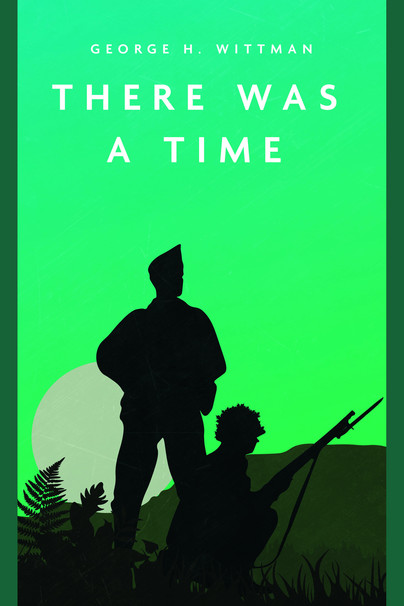
Format: Paperback
Pages: 312
ISBN: 9781636240442
Pub Date: 15 Dec 2021
Description:
It is the summer of 1945, the last and very dangerous days of World War II. The Office of Strategic Services is in close, cooperative contact with Ho Chi Minh and the fighting cadre of the Viet Minh, working against the Japanese. In the closing months of the war, the OSS parachute a team of special operations soldiers into Tonkin, northern Viet Nam.
Led by Major John Guthrie and his second-in-command, Captain Edouard Parnell, both experienced officers from their earlier assignments in occupied France and Belgium, the team are tasked with working with Ho Chi Minh against the Japanese in the midst of various groups vying for control of Indochina. Guthrie and his team have to adapt to the entirely different context of Vietnamese politics in order to encourage communist operations against the Japanese. Guthrie in particular, struggles with both his personal and professional conflicts. The relationship that Guthrie and the rest of the OSS team develops with the Viet Minh leadership is of distinct annoyance to French ambitions to regain control of their colony, Indochina.Based on the little-known true story of American and Viet Minh collaboration in 1945, this novel challenges the later-accepted dogma of both those supporting and those opposing the American role in the Viet Nam conflict. This novel notes how what is seen at a later time is often inadequate to understand what actually went on. Its contemporary relevance is simply a mirror of what is always the case in international affairs: today's enemies can and may be tomorrow's friends - and most importantly, the reverse is true also.
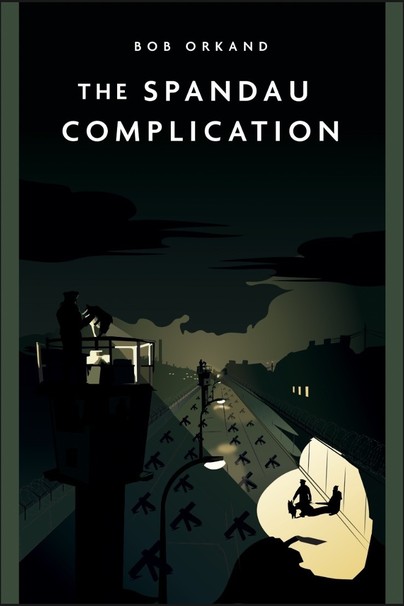
Format: Paperback
Pages: 272
ISBN: 9781636240268
Pub Date: 15 Dec 2021
Description:
Hot on the heels of a dressing-down by the U.S. Commander Berlin, U.
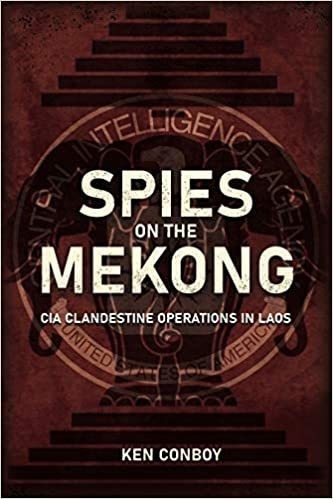
Format: Hardback
Pages: 256
ISBN: 9781636240190
Pub Date: 15 Dec 2021
Illustrations: maps and photographs
Description:
During the Cold War, the Central Intelligence Agency's biggest and longest paramilitary operation was in the tiny kingdom of Laos. Hundreds of advisors and support personnel trained and led guerrilla formations across the mountainous Laotian countryside, as well as running smaller road-watch and agent teams that stretched from the Ho Chi Minh Trail to the Chinese frontier. Added to this number were hundreds of contract personnel providing covert aviation services.
It was dangerous work. On the Memorial Wall at the CIA headquarters in Langley, Virginia, nine stars are dedicated to officers who perished in Laos. On top of this are more than one hundred from propriety airlines killed in aviation mishaps between 1961 and 1973. Combined, this grim casualty figure is orders of magnitude larger than any other CIA paramilitary operation.But for the Foreign Intelligence officers at Langley, Laos was more than a paramilitary battleground. Because of its geographic location as a buffer state, as well as its trifurcated political structure, Laos was a unique Cold War melting pot. All three of the Lao political factions, including the communist Pathet Lao, had representation in Vientiane. The Soviet Union had an extremely active embassy in the capital, while the People's Republic of China - though in the throes of the Cultural Revolution - had multiple diplomatic outposts across the kingdom. So, too, did both North and South Vietnam. All of this made Laos fertile ground for clandestine operations. This book comprehensively details the cloak-and-dagger side of the war in Laos for the first time, from agent recruitments to servicing dead-drops in Vientiane.

Format: Hardback
Pages: 392
ISBN: 9781636240138
Pub Date: 15 Dec 2021
Illustrations: maps and photographs
Description:
After the shocking fall of France in June 1940, the U.S. Army embarked on a crash program to establish a new armored force.
One of the units formed was the 756th Tank Battalion (Light), activated at Fort Lewis in June 1941. Because of severe equipment shortages, the new battalion trained without tanks for several months, but by early 1942 were equipped with new M3 light tanks. While companies A and C took part in Operation Torch, B was withheld for lack of cargo space in the transport ships and re-joined the battalion two months later in north Africa. The units undertook reconnaissance missions following the landings in Salerno. In December 1943 the battalion was ordered to upgrade to a medium tank (Sherman) unit. Given less than a month to reorganize and train in M4s, the battalion was sent into the Mignano Gap on January 11, 1944 and supported the 34th Infantry Division in the capture of Cervaro and Monte Trocchio. Later in January B Company supported the troops of the 100th Battalion on bloody but ill-fated attempts to cross the Rapido river - finally at the third attempt the battalion established a secure bridgehead across the Rapido. During the next two days the nearby town of Caira was also captured, opening a clear avenue for an attack on Cassino. Based on decades of research, and hours of interviews with veterans of the 756th Tank Battalion, Jeff Danby's vivid narrative puts the reader in the turret of B Company's Shermans as they ride into battle. Endorsements: “This is an excellent, in-depth, day-to-day account of the operations of one tank company of a US independent tank battalion, B Company, 756th Tank Battalion, in World War II… With its focus on tank crew members and their commanders this is a unique addition to the literature on WWII.”––A. Harding Ganz, Associate Professor Emeritus of the Ohio State University at Newark, author of Ghost Division “It is very rare to find a book that takes the reader down to the close and personal level of a company of men in battle. We have seen that for paratroopers in Band of Brothers and now we have it for a tank unit, in this case Company B of the 756th Tank Battalion. And what a remarkable book it is … the book is very hard to put down and by the end of it I found myself looking forward to reading the next volume.”––Jeffrey Plowman, author of Rampant Dragons: New Zealander’s Experience in Armour in World War II, Tank Attack at Monte Cassino: The Cavendish Road Operation 1944 and The Battles for Cassino Then and Now “[Danby] brings all his considerable skills to this unique Battalion level history. No lead is left unfollowed and this adds not only to the legitimacy of his work but also tells the personal story of these valiant men … It may be the best US armored unit history ever put together so long after the conflict … For the small unit historian of the Armored Units of the Second World War, I cannot recommend this book more highly.”––Victor Failmezger, author of American Knights, the Untold Story of the Legendary 601th Tank Destroyer Battalion “Jeff Danby weaves an empathetic tale of people in his history of Company B, 756th Tank Battalion. From the very start, he frames portentous global events in terms of how the young men who would fight the war would have seen them. Danby’s prose is punchy, visually evocative, and entertaining.”––Harry Yeide, author of The Tank Killers, The Infantry’s Armor, and Steeds of Steel “Danby introduces and develops an extensive cast of personalities, average American soldiers, as they experience combat and the quiet periods in-between, and gives the reader precious insight in to why this unit was so combat proficient. Jeff has written another great story which I recommend to everyone interested in WWII and especially tank units in that war.”––LTC Timothy R. Stoy, U.

Format: Hardback
Pages: 264
ISBN: 9781612009919
Pub Date: 15 Dec 2021
Description:
For the first two weeks of the Easter Offensive of 1972, the 571st Military Intelligence Detachment provided the only pertinent collateral intelligence available to American forces. Twice daily, the Detachment provided intelligence to the USS Buchanan (DDG-14), US Navy SEALS and Special Forces units including tactical and strategic forecasts of enemy movements, information that was otherwise unavailable to U.S.
units and advisors in-country. In the weeks before the offensive, vital agent reports and verbal warnings by the 571st MI Detachment had been ignored by all the major commands; they were only heeded, and then only very reluctantly, once the Offensive began. This refusal to listen to the intelligence explains why no Army or USMC organizations were on-call to recover prisoners discovered or U.

Format: Paperback
Pages: 192
ISBN: 9781636240664
Pub Date: 15 Dec 2021
Illustrations: diagrams throughout
Description:
Written by a proven leader and leadership expert, this book is an invaluable guide to anyone wanting to improve their leadership skills. Immersive, interactive, and memorable, it will empower you to raise your leadership awareness and help you on your journey to become a winning leader. Concise, focused chapters and an interactive format mean even the most time-strapped can benefit from John Antal's decades of experience.
If you are an emerging leader, this book will provide you with a mind-map and internal compass to maintain a bearing during your leadership journey. This mind-map will outline the contours of the leadership topography; the compass you create in your heart and your mind will provide direction; and your purpose will generate a destination. If you are an experienced leader, this book is also for you. You will find in it reinforcement, confirmation, and a series of knowledge points to add to your existing cognitive map and compass and to help you develop other leaders at every level of skill and awareness.
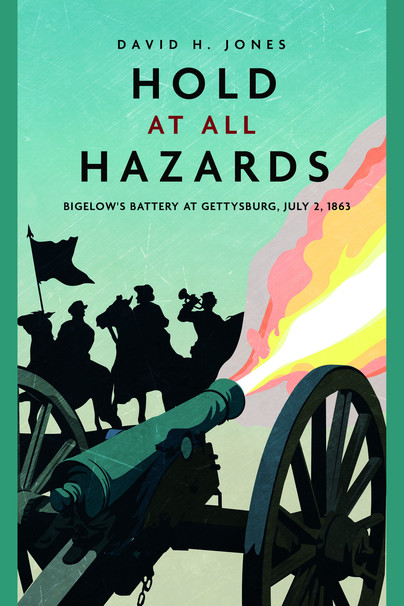
Format: Paperback
Pages: 272
ISBN: 9781636240602
Pub Date: 15 Dec 2021
Illustrations: Illustrations and maps
Description:
By late January of 1863, the 9th Massachusetts Battery of Light Artillery has been stationed within the Washington, D.C. defenses the entirety of its five-month existence.
The soldiers are badly demoralized, inadequately trained and poorly disciplined. When the inept captain of the battery believes that he's about to be fired, he hastily resigns, and the governor of Massachusetts promptly selects a twenty-three-year-old artillery officer with battlefield experience to take command. Captain John Bigelow institutes strict discipline and rigorous training which causes the men, including Chief Bugler Charles Wellington Reed, to consider him to be a heartless tyrant. However, Captain Bigelow's methods rapidly improve their capabilities and Reed reluctantly gains respect for the new captain. Nevertheless, subtle conflict between captain and bugler remains in a manner only constrained by military protocol. In late June of 1863 the battery is collected by the Army of the Potomac as it passes the Washington defenses to thwart an invasion by Robert E. Lee's Army of Northern Virginia. After days of hard marching, Bigelow's Battery arrives on the Gettysburg battlefield in the forenoon of July 2, 1863. Within hours they are immersed in violent combat during which the officers and men of the battery fight like veterans against the Confederates. Unbeknownst to Charlie, he will twice disobey a direct order from Captain Bigelow before the day is out. When furious fighting reaches a crescendo, the inexperienced light artillery battery is ordered to hold its position at all hazards, meaning until it's overrun. Without hesitation the batterymen stand to their guns and sacrifice their life's blood to gain the time necessary for a second line of artillery to be formed behind them, thus helping to prevent a disastrous defeat for the Federal Army on Northern soil. Charlie saves his captain's life and is later awarded the Medal of Honor.

Format: Paperback
Pages: 144
ISBN: 9781955041003
Pub Date: 15 Dec 2021
Description:
When ships under the command of European settlers first sailed into the Delaware Bay in the early 1600s, Pennsylvania’s documented history of strange and macabre events began. Contrary to the growth of other colonies like Massachusetts and Virginia, the Philadelphia area became a melting pot of different cultures and beliefs that all served to shape the way its people related to the supernatural, to the treatment of their dead, and toward each other. While it provided a refuge for those seeking religious liberty and economic prosperity, cultural tensions also shaped the colony in sinister ways, leading to a level of violence in the eighteenth century unseen anywhere else in the world.
How, in a place that was eighty percent pacifist, did Chester County, Pennsylvania, outstrip even London in the amount of murders and assaults committed? How did a judicial system hailed at the end of the 1600s as the best and fairest in the world, in which the death penalty only applied in cases of murder and treason, make the decision a century later to hang a man for burglary? Under what circumstances was it considered perfectly reasonable, even expected, to eat the dead?Jennifer L. Green transports readers through three centuries of murder, disease, witchcraft, cannibalism and botched executions in Chester and Delaware counties, using archival evidence and research to explain how such historical oddities and tragedies occurred.
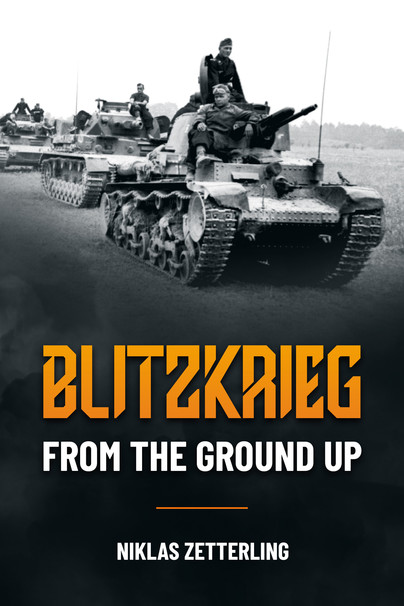
Format: Paperback
Pages: 336
ISBN: 9781636240558
Pub Date: 15 Dec 2021
Description:
The successes of the German Blitzkrieg in 1939–41 were as surprising as they were swift. Allied decision-makers wanted to discover the secret to German success quickly, even though only partial, incomplete information was available to them. The false conclusions drawn became myths about the Blitzkrieg that have lingered for decades.
It has been argued that German victories in the early part of the war rested less upon newly developed tanks and aircraft and more on German military traditions: rather than creating a new way of war based on new technology, the Germans fitted the new weapons into their existing ideas on warfare. These doctrines focused on independent action, initiative, flexibility, decentralized decision-making and mobility. The conduct of German soldiers, particularly the lower-ranking men, on the battlefield was at the core of the concept and German victories rested upon the quality of the small combat units.This book focuses on the experience of the enlisted men and junior officers in the Blitzkrieg operations in Poland, Norway, Western Europe and Russia. Using accounts previously unpublished in English, military historian Niklas Zetterling explores how they operated, for example how a company commander led his tanks, how a crew worked together inside a tank, and the role of the repair services. The author fits these narratives into a broader perspective to give the reader a better understanding of why the Germans were so successful in 1939–41.
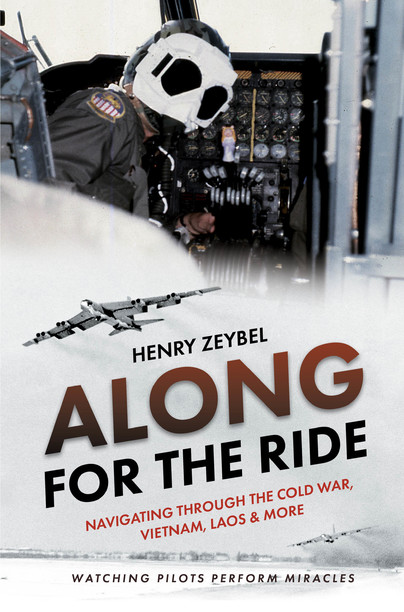
Format: Hardback
Pages: 288
ISBN: 9781636240381
Pub Date: 15 Dec 2021
Description:
During Hank Zeybel's first tour in Vietnam he flew 772 C130 sorties as a navigator. He volunteered for a second tour, requesting assignment to B26s so he could "shoot back." When B26s were removed from the inventory, he accepted a Spectre gunship crew slot, flying truck-busting missions over the Ho Chi Minh Trail.
He describes the terror of flying through heavy AA fire over the trail, and the heroics of the pilots in bringing their crews through. Away from the war he recalls leave back in the US, his elderly father bewildered by his war-hardened attitude and black sense of humor. Contextualising his time with Spectre gunships, he compares his experiences with those of other airmen, like Phil Combies and Robin Olds, and his broader Air Force career - he joined upon graduating university in 1955 and his first operational assignment was as a B47 Stratojet navigator-bomber at Strategic Air Command - trained to drop thermonuclear bombs with precision. From 1957 to 1963, he logged over two thousand hours as a radar-bombardier in B47 Stratojets and B52 C-models. In this memoir of Vietnam, his Air Force career and his second career as a journalist and writer, Zeybel's admiration of the skill and bravery of pilots - many of whom who he depended on for his very survival - shines through his desciptions of combat missions and being "along for the ride."

Format: Paperback
Pages: 288
ISBN: 9781636240886
Pub Date: 15 Dec 2021
Description:
Phillip Parotti's new novel offers fast-paced action in the skies over the Sinai desert in 1916. Lieutenant Devlin Collins, an Irish-American flier in the Royal Flying Corps, expecting to fly on the Western Front, instead finds himself flying antiquated two-seater bomber and photo reconnaissance missions over the Egyptian desert against the forces of the Central Powers which are trying to capture the Suez Canal. Pitted against German machines which are up-to-date and well equipped, the men of the RFC fight at a considerable disadvantage as they go forth to meet their enemy, but committed to their cause and with aggressive spirit, no matter how great the stress of battle, they proceed and prevail, continually forcing the Turks and Germans back as the army moves slowly toward Palestine.
Constantly endangered by superior German machines, facing incessant ground fire during their bombing and strafing attacks, Dev and his fellow pilot Crisp drive home their attacks with unremitting determination. In the off hours from combat, Dev discovers that he has a particular talent for planning his flight's air raids. This talent manifests itself completely in the campaign's culminating attack on the German redoubts at the battle of Magdhaba, an attack so successful that when the pilots are finally pulled back for a rest after a year of fighting, Dev is promoted and invited onto the staff at GHQ is order to apply his expertise to air planning as the army moves on Gaza with the intention of driving into Palestine.

Format: Hardback
Pages: 160
ISBN: 9781636240640
Pub Date: 10 Dec 2021
Series: Casemate Illustrated Special
Illustrations: Color
Description:
A comprehensive and fully illustrated account of all the vehicles needed to move, use, and maintain communications equipment vital to the success of the U.S. Army during World War II, including trucks, workshop trucks, vans and trailers all designed by the Signal Corps, described in technical detail and illustrated by hundreds of period photos.
The Signal Corps was at the forefront of the technological development of communications throughout World War II. Tasked with coordinating all American military activities, the Signal Corps initially had to rely on a communications landline network covering some 1 300 000 km. This was soon overtaken by radio communications. however adaptation remained a priority within the US Army Signal Corps for when landline networks were unavailable or radio silence had to be observed.Almost every large piece of Signal Corps equipment required wheeled transport, and over a hundred vehicles and trailers would be specially designed, many associated with one particular radio or radar installation. This comprehensive and fully illustrated account covers radar and radio vehicles, plus specialised vehicles such as telephone repair trucks, mobile telephone switchboards and homing pigeon units, all described in technical detail and illustrated by hundreds of period photos.

Format: Hardback
Pages: 192
ISBN: 9781636240909
Pub Date: 10 Dec 2021
Series: Casemate Illustrated Special
Illustrations: 150 photographs and illustration
Description:
This book provides an overview of the victory markings painted on the fins and rudders of the planes of the German day fighter and night fighter aircraft between 1939 and 1945, and demonstrates how these were applied in reality through the profiles of nineteen pilots, including some of the most emblematic pilots of the Luftwaffe: Hans Troitzsch, Johannes Gentzen, Frank Liesendahl, Wilhelm Balthasar, Otto Bertram, Joachim Müncheberg, Karl-Heinz Koch, Kurt “Kuddel” Ubben, Felix-Maria Brandis, "Fiffi" Stahlschmidt, Franz-Josef Beerenbrock, Heinrich Setz, Walter "Gulle" Oesau, Max-Hellmuth Ostermann, Heinrich Bartels, "Fritz" Dinger, Martin Drewes, Egmont zur Lippe-Weissenfeld and Ludwig Meister.

Format: Hardback
Pages: 224
ISBN: 9781636240862
Pub Date: 10 Dec 2021
Series: Casemate Illustrated Special
Illustrations: Over 200 photographs, diagrams and artwork
Description:
When HMS Dreadnought was commissioned into the Royal Navy in 1906 this revolutionary new class of big-gun iron-clad warship immediately changed the face of naval warfare, rendering all other battleships worldwide obsolete. The Admiralty realised that as soon as the ship was revealed to the global naval community Britain would be a in race to stay ahead, and so the first dreadnoughts were built in record time. While there were those who regarded the vessel as a triumphant revolution in naval design, the dreadnought initially had its critics, including those who thought its slower, heavier guns left it vulnerable to the secondary armament of other warships.
Nevertheless, other countries, notably Germany, and the United States soon began to lay down dreadnoughts. The culmination of this arms race would be the confrontation of the British and German fleets at the Battle of Jutland in May 1916 - the greatest clash of naval firepower in history. This book gives detailed insights into the design, operation and combat history of these incredible vessels.

Format: Hardback
Pages: 256
ISBN: 9781636240114
Pub Date: 10 Dec 2021
Illustrations: maps and photographs
Description:
In an era of battlefield one-upmanship, the raid on the Nation's capital in July 1864 was prompted by an earlier failed Union attempt to destroy Richmond and free the Union prisoners held there. Jubal Early's mission was in part to let the North have a taste of its own medicine by attacking Washington and freeing the Confederate prisoners at Point Lookout in southern Maryland. He was also to fill the South's larder from unmolested Union fields, mills and barns.
By 1864 such southern food raids had become annual wartime events. And he was to threaten and, if possible, capture Washington. This latter task was unrealistic in an age when the success of rifle fire was judged to be successful not by accuracy, but by the amount of lead that was shot into the air. Initially, the Union defenders of the city were largely former slaves, freemen, mechanic, shopkeepers and government clerks, as well as invalids. They might not have known much about riflery and accuracy, but they were capable of putting ample lead on the long until Regular Union regiments arrived. Jubal Early hesitated in attacking Washington, but he held the City at bay while his troops pillaged the countryside for the food Lee's Army needed to survive.This new account focuses on the reasons, reactions and results of Jubul Early's raid of 1864. History has judged it to have been a serious threat to the capital, but James H. Bruns examines how the nature of the Confederate raid on Washington in 1864 has been greatly misinterpreted - Jubal Early's maneuvers were in fact only the latest in a series of annual southern food raids. It also corrects some of the thinking about Early's raid, including the reason behind his orders from General Lee to cross the Potomac and the thoughts behind the proposed raid on Point Lookout and the role of the Confederate Navy in that failed effort. It presents a new prospective in explaining Jubal Early's raid on Washington by focusing on why things happened as they did in 1864. It identifies the cause-and-effect connections that are truly the stuff of history, forging some of the critical background links that oftentimes are ignored or overlooked in books dominated by battles and leaders.


















